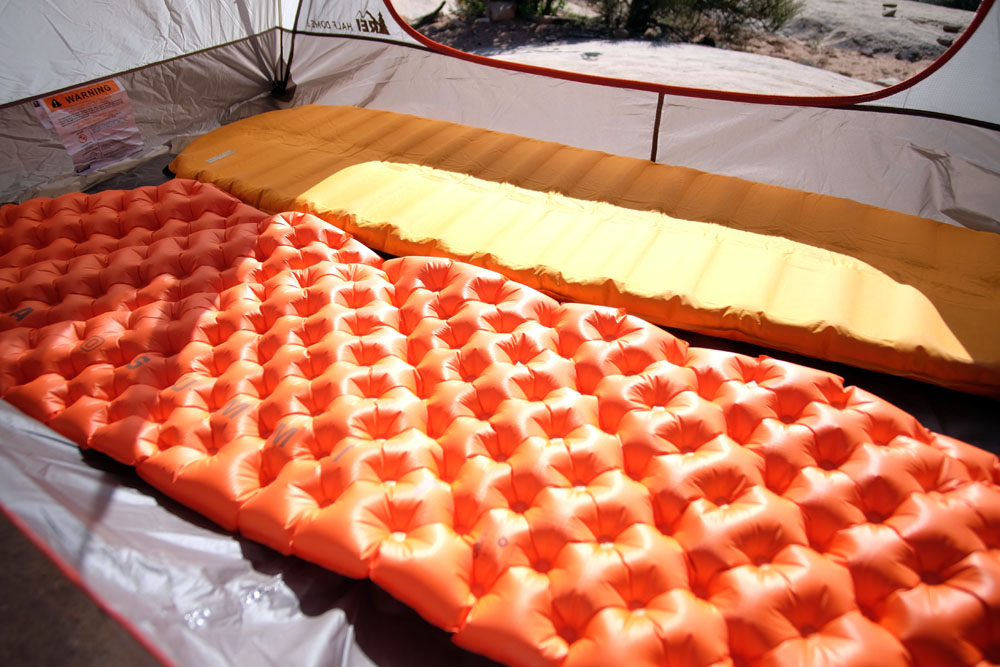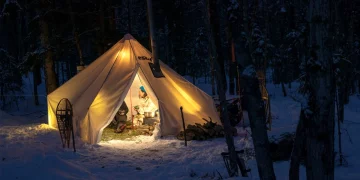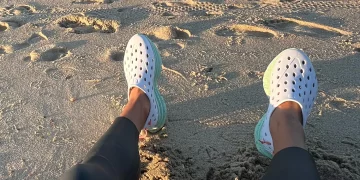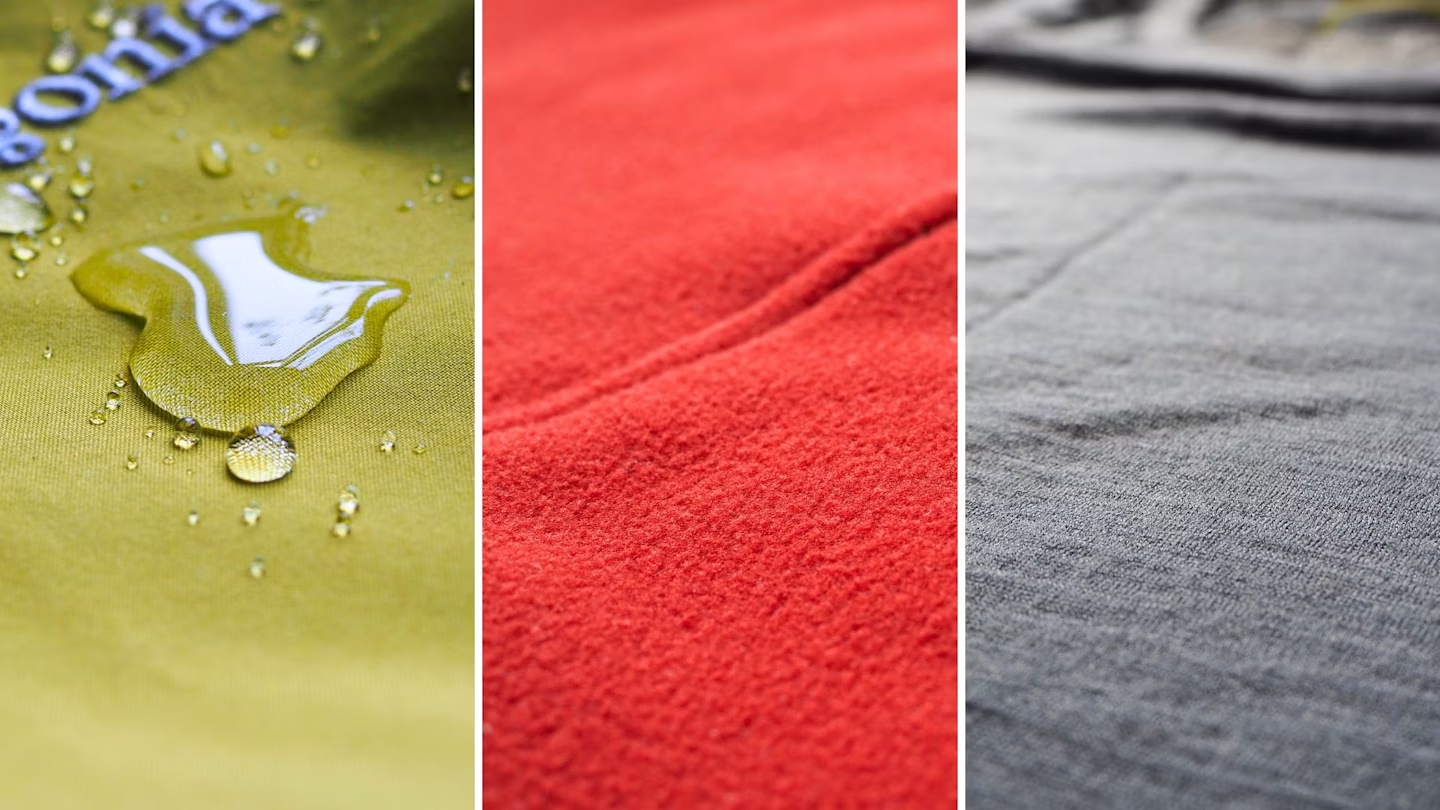Winter camping is a thrilling challenge that pushes outdoor enthusiasts to their limits, testing not only their survival skills but also their ability to choose the right gear. Whether you’re venturing into the deep woods for a weekend or embarking on a multi-day trek across snowy mountains, the gear you select can make or break your experience. This article will guide you through the best winter camping gear you need to keep warm, safe, and comfortable. Let’s dive in!
1. Winter Sleeping Bags: Your Cozy Sanctuary
When the temperature drops below freezing, having the right sleeping bag is crucial. Standard sleeping bags aren’t equipped to handle the biting cold of winter, so you’ll need one specifically designed for sub-zero temperatures.
Key Features:
- Temperature Rating: Winter sleeping bags are usually rated for temperatures ranging from 20°F (-6°C) to -40°F (-40°C), so choose one according to the expected conditions. Always opt for a sleeping bag that has a lower limit rating than the lowest expected temperature.
- Insulation Type: The two main types of insulation in winter sleeping bags are down and synthetic. Down insulation is lighter, more compressible, and has better warmth-to-weight ratios. However, it loses its insulating properties when wet. Synthetic insulation, on the other hand, retains warmth even when damp but is bulkier and less efficient than down.
- Shape and Fit: Mummy-shaped sleeping bags are ideal for winter camping because they’re designed to fit snugly around the body, reducing heat loss. They come with a fitted hood to help trap heat around your head.
Recommended Brands:
- The North Face: Known for its high-quality, insulated sleeping bags for extreme cold.
- Western Mountaineering: Offers lightweight yet incredibly warm down sleeping bags.
- Mountain Hardwear: Popular for synthetic insulation options.
2. Winter Tents: Your Shelter from the Storm
The next critical piece of winter camping gear is your tent. Winter tents are specifically designed to withstand heavy snow, fierce winds, and extreme cold. Regular 3-season tents just won’t cut it in these conditions.
Key Features:
- Four-Season Design: These tents are built to handle snow loads and high winds. Unlike 3-season tents, they have reinforced poles and thicker fabrics to keep you safe in winter’s harshest conditions.
- Ventilation: Winter tents need to be well-ventilated to prevent condensation buildup inside, which can make your sleeping space cold and damp.
- Weather Resistance: Look for tents that are waterproof and windproof. The rain fly should be durable enough to protect against both snow and rain.
Recommended Brands:
- Hilleberg: Known for their ultralight, high-performance tents built for extreme winter conditions.
- MSR (Mountain Safety Research): Offers durable, reliable four-season tents that perform well in cold and windy environments.
- Big Agnes: Combines comfort and durability, offering tents suitable for winter adventures.
3. Insulated Sleeping Pads: Sleeping in Comfort
Even with a great sleeping bag, your camping pad is just as important for staying warm. In the winter, sleeping on the cold ground can rapidly deplete your body heat.

Key Features:
- R-Value: This is the measure of thermal resistance. Look for a pad with a high R-value (5.0 and above) for winter camping. An R-value of 5.0 means it provides solid insulation from the cold ground.
- Thickness and Support: Choose a thicker pad for added insulation, but keep in mind that thicker pads tend to be bulkier and heavier. Air pads with multiple layers of insulation provide both comfort and warmth.
- Compactness and Durability: Since you’ll likely be carrying your gear over long distances, go for a pad that balances comfort with portability. Also, winter pads are often made with more durable materials to withstand rough, icy terrain.
Recommended Brands:
- Therm-a-Rest: Their NeoAir XTherm is one of the top choices for cold-weather camping, with an R-value of 6.9.
- Sea to Summit: Known for lightweight, high-performance pads like the Ether Light XT Insulated.
4. Winter Clothing: Dressing for the Elements
Winter camping means being exposed to elements that can make staying warm a challenge. Layering is key to staying comfortable. Let’s look at the essential layers for winter camping.
Base Layer (Moisture-Wicking):
- Material: Merino wool or synthetic fabrics like polyester are ideal because they wick moisture away from your skin, keeping you dry and warm.
- Top Picks: Icebreaker and Smartwool offer excellent merino wool options for both tops and bottoms.
Mid-Layer (Insulation):
- Material: Fleece, down, or synthetic insulated jackets work great as mid-layers. They provide warmth without bulk.
- Top Picks: Patagonia and Arc’teryx offer top-of-the-line insulated jackets that perform well in cold, wet conditions.
Outer Layer (Protection):
- Material: Waterproof, windproof shells made of Gore-Tex or other durable water-resistant fabrics will protect you from snow, rain, and wind.
- Top Picks: Arc’teryx and The North Face offer high-performance jackets that keep the wind at bay.
Accessories:
- Gloves: Insulated, waterproof gloves are a must. Consider a pair of liner gloves for dexterity and thicker mittens for warmth.
- Hats and Neck Gaiters: A wool or synthetic hat will trap heat, while a neck gaiter or balaclava helps prevent heat loss from your face.
- Socks: Merino wool socks are a lifesaver—soft, warm, and moisture-wicking.
5. Winter Cooking Gear: Warm Meals in the Cold
Cooking in the winter can be challenging. Snow, wind, and freezing temperatures can make outdoor stoves less efficient, but with the right gear, you can enjoy hot meals and drinks in the wilderness.
Key Features:
- Stove Choice: Canister stoves are popular for winter camping, but be sure to choose one that performs well in cold conditions. Liquid fuel stoves, such as those that run on white gas, are often more reliable in frigid temperatures.
- Fuel Efficiency: In winter, fuel tends to burn faster due to the cold temperatures. Consider bringing extra fuel to ensure you have enough for cooking and boiling water.
- Cookware: Look for lightweight, durable cookware that is easy to clean and won’t freeze. Titanium pots are excellent for winter camping because they heat up quickly.
Recommended Gear:
- MSR WhisperLite Universal Stove: Known for its reliable performance in cold weather.
- Jetboil MiniMo: A compact, efficient stove perfect for quick meals.

6. Winter Lighting: Brightening the Dark Days
With shorter days and long nights, having a reliable light source is crucial.
Key Features:
- Headlamps: A headlamp with a red-light setting is ideal for winter camping. Red light preserves night vision and doesn’t attract insects.
- Battery Life: In cold conditions, batteries tend to drain faster, so choose a headlamp with a long battery life or bring extra batteries.
- Water Resistance: Since winter camping often involves wet conditions, make sure your light is water-resistant or waterproof.
Recommended Brands:
- Black Diamond: Their headlamps like the Spot 400 are reliable and provide excellent brightness and battery life.
- Petzl: Known for their high-quality, durable headlamps designed for winter environments.
7. Winter Footwear: Keep Your Feet Warm and Dry
Footwear is essential in keeping your feet comfortable and safe while winter camping. Cold, wet feet can lead to frostbite and misery.
Key Features:
- Insulation: Look for boots with built-in insulation, rated for temperatures that match the conditions you’ll face.
- Waterproofing: Waterproof boots will keep your feet dry while trekking through snow and ice.
- Traction: Insulated boots with good tread are essential for gripping icy or snowy surfaces.
Recommended Brands:
- Sorel: Their Caribou and Conquest boots are known for keeping feet warm in extremely cold conditions.
- Columbia: Offers durable, insulated boots perfect for winter hikes.
8. Winter Navigation and Safety Gear
When winter camping, navigation can be tricky, and safety is paramount. Equip yourself with a few key tools.
Key Gear:
- GPS Devices: In winter, trails can be hard to follow, so a GPS device with offline maps can be a lifesaver.
- Avalanche Safety Gear: If you’re camping in avalanche-prone areas, you’ll need an avalanche beacon, probe, and shovel.
9. Winter Campfire and Heat Sources
While it’s not always feasible to build a fire in deep snow, a small camp stove or portable heater can help provide warmth in your tent.
Key Gear:
- Portable Heaters: A catalytic heater can keep your tent warm, but always follow safety precautions and ensure proper ventilation.
- Fire Starting Kit: Fire starter kits, which include waterproof matches and fire starters, can be invaluable.
Conclusion: Be Prepared for Winter Adventures
Winter camping is a test of resilience, adaptability, and preparedness. The right gear makes all the difference in transforming a cold, uncomfortable trip into a memorable adventure. From sleeping bags to clothing, cooking gear to safety equipment, every item serves a purpose in ensuring your winter camping experience is safe, warm, and enjoyable.























